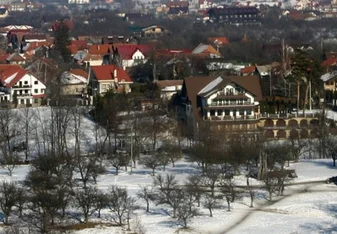High School Abroad in Eastern Europe
High School Programs in Eastern Europe
About
Eastern Europe is a cheap, cultural, and incredible part of Europe rich with history, medieval ruins, and a plethora of different opportunities for high schoolers. It’s incredibly different from other parts of Europe, one of the many reasons it’s such a unique place to study abroad.
Students can choose which country best suits their needs in Eastern Europe and have the option to travel between multiple countries, adding to their overall experience.
Eastern Europe is best for students interested in economics, language, politics, and history.
Program Types
Study
Studying in Eastern Europe will provide students with a chance to study the history and economy of countries that used to be divided from Western Europe.
- History: The history in Eastern Europe dates back centuries, and is especially fascinating for students wishing to study the history of communism. Students may learn about pre and post Soviet Union ruling during their course.
- Language: From Russian and Hungarian to Czech, Polish, and Croatian, the opportunities for students to study a new language in Eastern Europe are endless.
- Economics: Students may learn about the economy during the Soviet Union’s ruling and how it affected each country for the following years.
Volunteer
Certain areas of Eastern Europe, such as Russia, hold several volunteer and service learning opportunities for high school students. Here are a few to consider:
- Teaching English: In countries like Croatia, Hungary, Estonia, and Albania, teaching English may be helpful to non-speakers in underprivileged communities.
- Community Development: students may have the chance to interact with locals and contribute to efforts made toward improving the community. Possible areas of interest span from infrastructure and local conservation initiatives to social work.
Summer Programs
Doing a summer program is a great choice for students who don’t want to diverge from their original studies at home, but would still like to experience the culture and language in another country or few countries. Programs may last anywhere from 2 weeks to a couple months and may include a language program to help students adjust to the surrounding culture.
Language Immersion
Students wishing to learn another language may have a difficult time choosing which country to go to, since languages across Eastern Europe differ greatly! Regardless of where students end up studying or volunteering, a language program may last for the duration of their program or may be an intensive crash course for several hours.
Cultural Immersion
Students may take classes alongside other local students, or enroll in a program that is solely students from their home country. Students may choose to study in only one country. This will give students more time to explore the country more fully.
Alternatively, students may choose to study in multiple countries. This will allow students to learn about more than one culture, expanding their knowledge of the Eastern European region.
Planning Your Trip
Visa
The visa requirements are going to differ from country to country. For example, students wishing to study in Russia will need to fill out a visa application form, passport photos, proof of departure and various other items. For European students, they will not need a visa for many of these countries.
Many countries that are a part of the EU and Schengen Area will grant non-European travelers a 90 day visa free stay. Some of these countries include:
- Poland
- Czech Republic
- Croatia
- Hungary
- Estonia
- Albania
- Bosnia
However, if you’re planning on studying in these countries, you may need to apply for a student visa. Again, the visa requirements will vary based on each country.
Housing
Students may live in a homestay with a local family, stay in a dorm, or share a flat or apartment with their peers. Homestays great for students who want a closer, more personal experience with their host country. Dorms and apartments are a great way for students who want to live with their peers and share this experience with them.
Many high school programs will arrange housing for students prior to their arrival in the designated country.
Countries in Eastern Europe
Some countries in Eastern Europe include:
- Russia
- Central Europe: Czech Republic, Hungary, Poland, Slovakia
- Balkan Peninsula: Albania, Croatia, Bosnia, Bulgaria, Greece, Macedonia, Montenegro
- Baltic State: Lithuania, Latvia, Estonia
Popular Cities
Moscow and St. Petersburg in Russia are two of the more popular cities in Russia, and offer a lot of art, cultural, and historical learning opportunities for students.
Prague in the Czech Republic is another popular destination for students wishing to study or volunteer when they go overseas. The city is cheap, safe, culturally rich, and inviting! Budapest is another city nearby in Hungary, and can easily be reached from Prague (and vice versa).
Another potential destination is Warsaw, Poland, which is a very livable city with a ton of political and economics study opportunities.
Packing Tips
Weather varies between each country. In some parts of Russia, temperatures can peak at 113 degrees F during the summer. Wearing loose-fitting cotton clothing is one of the best ways to combat the heat and stay cool. The winters can be brutal, with temperatures as low as 12 degrees F. Packing insulated jackets, boots, and clothing that can be layered is the best way to prepare.
Alternatively, summers in the Czech Republic reach temperatures to around 85 degrees F. Winters in the Czech Republic are around 20 degrees F.
For students planning on visiting more than one country, pack clothing that can be layered to prepare for any type of weather. Make sure to also read up on cultural etiquette when packing your suitcase! You don't want to pack any clothing that might offend the people you'll meet there.
Costs
Except for Russia, Eastern Europe is relatively cheap, especially compared to Western Europe. Croatia is one of the more expensive European countries, but students will still be able to budget themselves on around $20-30 USD a day. In other countries like Czech Republic, Poland, Romania, and Estonia, students may budget themselves on $10-20 a day.
Travel between many of the central European countries is relatively cheap and easy, and range from affordable train rides to more expensive (but still relatively budget-friendly) plane rides.
Many countries offer student discounts in restaurants, cinemas, museums, and visits to historical monuments, which will cut back on student costs.
Health & Safety
Health
For Russia and many of the countries in the EU, vaccinations are not required. However, its highly recommended that you are up to date on any routine vaccinations before arriving to your designated country. It's also recommended that you purchase travel insurance in case of a medical emergency, cancellations, or theft.
Safety
Central European countries and the countries in the Baltics are all considered relatively safe to visit. As you would in any country, take any necessary precautions to keep yourself safe. Never walk around alone at night, and lock away any personal belongings.
As for Russia, it’s recommended that any traveler avoid the Ukraine and Russian border due to recent kidnappings and clashes. There is also a high threat of terrorism in Moscow, so travelers should remain alert in any public places they visit.
It’s also recommended that travelers avoid all areas of Donetsk and Luhansk in Ukraine, due to recent reports of violence.









